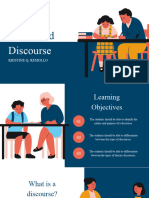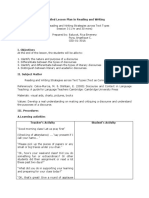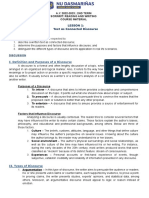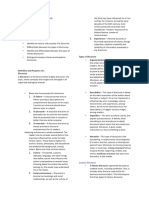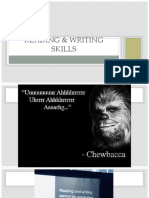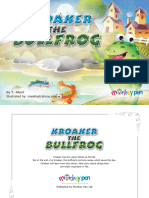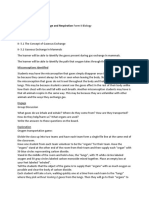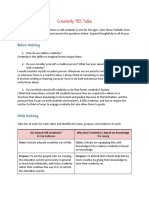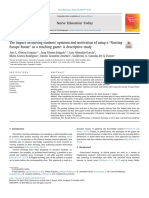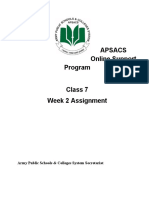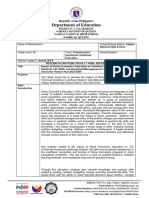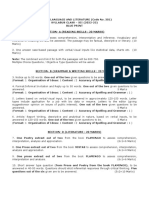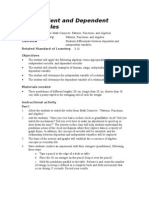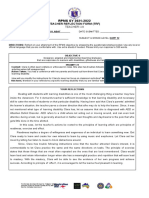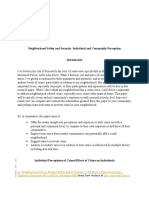0% found this document useful (0 votes)
25 views4 pages1st Topic
Discourse refers to a formal discussion of a topic, often structured to inform, persuade, or entertain. It can take various forms, including argumentation, description, exposition, and narration, and is influenced by factors such as culture, social environment, and personal experiences. Additionally, discourse can be categorized into literary and academic types, with distinct characteristics in language use and structure.
Uploaded by
Ro ZenCopyright
© © All Rights Reserved
We take content rights seriously. If you suspect this is your content, claim it here.
Available Formats
Download as DOCX, PDF, TXT or read online on Scribd
0% found this document useful (0 votes)
25 views4 pages1st Topic
Discourse refers to a formal discussion of a topic, often structured to inform, persuade, or entertain. It can take various forms, including argumentation, description, exposition, and narration, and is influenced by factors such as culture, social environment, and personal experiences. Additionally, discourse can be categorized into literary and academic types, with distinct characteristics in language use and structure.
Uploaded by
Ro ZenCopyright
© © All Rights Reserved
We take content rights seriously. If you suspect this is your content, claim it here.
Available Formats
Download as DOCX, PDF, TXT or read online on Scribd
/ 4









